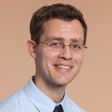The EV Revolution: Kiplinger Economic Forecasts
Kiplinger keeps you abreast of the latest developments in the auto sector.


Electric vehicles are a hot topic with the drive to a more sustainable future. To help you understand the market, our highly experienced Kiplinger Letter team will keep you abreast of developments, with their latest forecast below. (Get a free issue or subscribe to the Letter.) For more information, also see the latest EV news from our digital team on electric vehicle taxes, EV tax credits and lots more. Now for the latest forecast…
However you feel about electric vehicles (EVs), the government wants you to buy one in the future, as shown by its new fuel economy regs. The only way automakers can satisfy the new rules will be by a big shift from internal combustion to EVs (a class of vehicle that has passionate fans and critics).
Setting aside the pros and cons of EVs, which we’ll address in the future, some key questions:
From just $107.88 $24.99 for Kiplinger Personal Finance
Become a smarter, better informed investor. Subscribe from just $107.88 $24.99, plus get up to 4 Special Issues

Sign up for Kiplinger’s Free Newsletters
Profit and prosper with the best of expert advice on investing, taxes, retirement, personal finance and more - straight to your e-mail.
Profit and prosper with the best of expert advice - straight to your e-mail.
- Can the industry actually switch to EVs for the majority of its sales?
- Can the electric grid and charging network accommodate a flood of them?
Electric vehicle revolution
Let’s take a look at the biggest challenges to the Fed's plan which sees at least 54% of new cars being electric vehicles in 2030 and at least 64% in 2032. Washington thinks this will save consumers a bundle on fuel costs while improving the nation’s air quality.
The sheer scale of the change is enormous: EVs accounted for about 6% of new cars sold in 2022, and while sales are growing fast, they’re a long way from the 64% share that the White House wants.
Despite its strong commitment to going EV, the auto industry probably has qualms about meeting the Fed's targets. One insider we know thinks most automakers don’t yet know how to make it happen.
Much depends on future technology advances and future consumers’ openness to going electric — factors that can be estimated, but only with a lot of uncertainty.
Huge amount of materials needed to build electric vehicles
The amount of raw materials required to build so many EVs looks daunting. The copper needed to build future electric cars and switch to renewable energy, as the U.S. and other countries are planning, would send global copper demand to 58 million tons in 2050 — more copper than the world consumed from 1900 to 2021.
Other necessary minerals, such as lithium, nickel, cobalt, etc, also stand to be in tight supply unless tech advances enable future batteries that use less of them.
Then there is the potential strain on the electric grid. A large fleet of EVs would produce substantial new power demand, at a time when the grid’s reliability is already slipping. Plus, many state and local officials are pushing to switch from natural gas to electricity for home appliances and heating systems, while the grid is also becoming more reliant on intermittent renewable power, such as solar and wind.
Money available for infrastructure
The Biden administration has billions of dollars from Congress to upgrade the grid with new transmission lines to improve reliability. But its plans face obstacles.
The charging infrastructure for EVs also badly needs to be upgraded. Public stations often are out of order or difficult to use, and there are far too few.
Don’t be surprised if automakers rely heavily on plug-in hybrid cars which run a modest distance on battery power, with gas engines for longer travel to meet the stricter targets while trying to meet a wider range of customers’ needs.
This forecast first appeared in The Kiplinger Letter. Since 1925, the Letter has helped millions of business executives and investors profit by providing reliable forecasts on business and the economy, as well as what to expect from Washington. (Get a free issue or subscribe to the Letter.)
Related content
Profit and prosper with the best of Kiplinger's advice on investing, taxes, retirement, personal finance and much more. Delivered daily. Enter your email in the box and click Sign Me Up.

Jim joined Kiplinger in December 2010, covering energy and commodities markets, autos, environment and sports business for The Kiplinger Letter. He is now the managing editor of The Kiplinger Letter and The Kiplinger Tax Letter. He also frequently appears on radio and podcasts to discuss the outlook for gasoline prices and new car technologies. Prior to joining Kiplinger, he covered federal grant funding and congressional appropriations for Thompson Publishing Group, writing for a range of print and online publications. He holds a BA in history from the University of Rochester.
-
 Stocks Struggle for Gains to Start 2026: Stock Market Today
Stocks Struggle for Gains to Start 2026: Stock Market TodayIt's not quite the end of the world as we know it, but Warren Buffett is no longer the CEO of Berkshire Hathaway.
-
 Tip: Ways to Track Your Credit Card Rewards
Tip: Ways to Track Your Credit Card RewardsHere are the best strategies and apps to help you stay current with your credit card rewards.
-
 How New Investors Can Pick Their Perfect Portfolio, According to a Pro
How New Investors Can Pick Their Perfect Portfolio, According to a ProSee what Cullen Roche has to say about finding your perfect portfolio as a new investor and his two-word answer on where he thinks the stock market is headed in 2026.
-
 Special Report: The Future of American Politics
Special Report: The Future of American PoliticsThe Kiplinger Letter The Political Trends and Challenges that Will Define the Next Decade
-
 AI Appliances Aren’t Exciting Buyers…Yet
AI Appliances Aren’t Exciting Buyers…YetThe Kiplinger Letter Artificial intelligence is being embedded into all sorts of appliances. Now sellers need to get customers to care about AI-powered laundry.
-
 What to Expect from the Global Economy in 2026
What to Expect from the Global Economy in 2026The Kiplinger Letter Economic growth across the globe will be highly uneven, with some major economies accelerating while others hit the brakes.
-
 Shoppers Hit the Brakes on EV Purchases After Tax Credits Expire
Shoppers Hit the Brakes on EV Purchases After Tax Credits ExpireThe Letter Electric cars are here to stay, but they'll have to compete harder to get shoppers interested without the federal tax credit.
-
 The Economy on a Knife's Edge
The Economy on a Knife's EdgeThe Letter GDP is growing, but employers have all but stopped hiring as they watch how the trade war plays out.
-
 Banks Are Sounding the Alarm About Stablecoins
Banks Are Sounding the Alarm About StablecoinsThe Kiplinger Letter The banking industry says stablecoins could have a negative impact on lending.
-
 Japan Enters a New Era of Risk and Reform
Japan Enters a New Era of Risk and ReformThe Kiplinger Letter Japan has entered a pivotal moment in its economic history, undertaking ambitious policy and structural reforms to escape from decades of stagnation.
-
 After Years of Stagnant Growth, Hope Emerges for EU Economy
After Years of Stagnant Growth, Hope Emerges for EU EconomyThe Kiplinger Letter Can a German fiscal push outweigh French political peril?